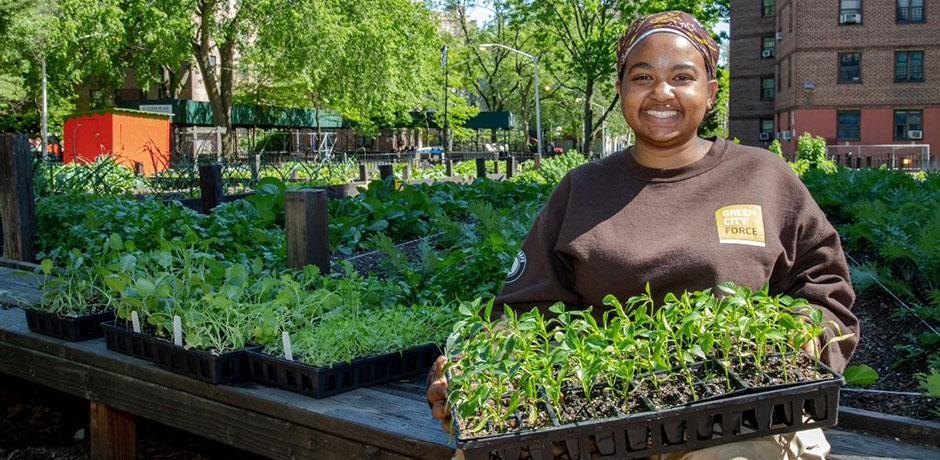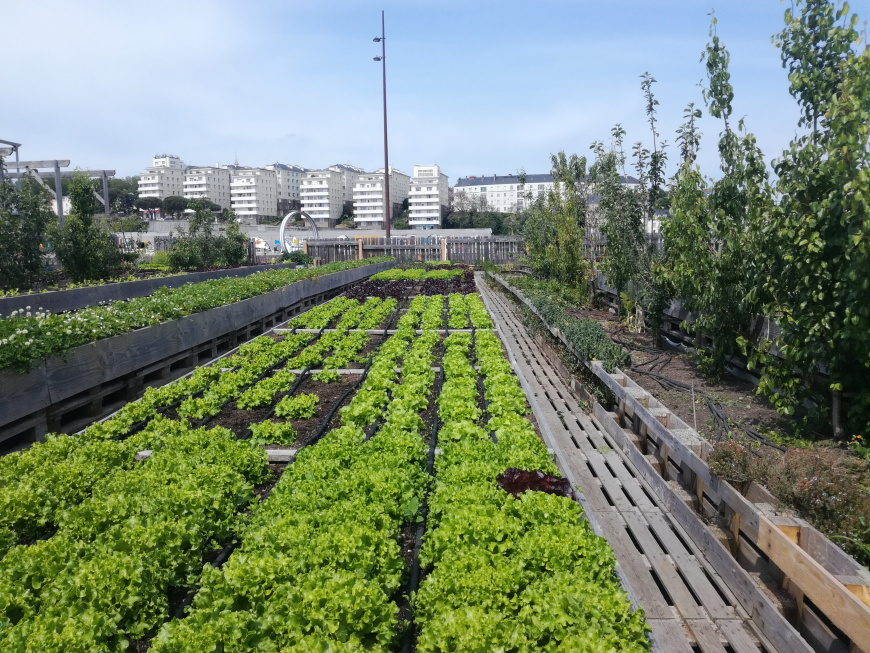The Main Principles Of City Blooming
The Main Principles Of City Blooming
Blog Article
The Main Principles Of City Blooming
Table of ContentsSee This Report on City BloomingThings about City BloomingThe Best Strategy To Use For City BloomingNot known Facts About City BloomingCity Blooming Things To Know Before You Buy

As you walk the roads of the Bronx, Southside Chicago or East Oakland, you may see have also seen big stories of ripening fruits and vegetables being gathered. What exactly are city farms and community yards? Urban agriculture, city farming, or metropolitan gardening is the technique of growing, processing and dispersing food in or around metropolitan locations.
Typically, metropolitan farming as a technique is a bigger financial investment than horticulture. There are countless more hours invested right into the trivial matters of farming, from the crop plan to the tending of your beds. This moment commitment tackles a whole brand-new significance once you realize the goal that is being functioned towards and dedicated, namely that of obtaining a plentiful yield of crops to be consumed.
A neighborhood yard is a single tract gardened jointly by a group of people. Community yards use either specific or shared plots on exclusive or public land while producing fruit, vegetables, and/or plants expanded for their eye-catching look. The standard version here is that a large team of individuals each contribute a reasonably percentage of time to working their very own story, and get the fruits of their labor consequently.
The Of City Blooming

There are community yards, a number of whom Little Axe Peppers has actually partnered with, that offer aid to evacuees, low-income families, youngsters teams, and neighborhood companies by helping them create and expand their own gardens. The distinctions in between community yard and city farm are nuanced, though in the long run the same standard activity takes placefood plant cultivation but within different business structures.
Urban farms are normally a lot more organization and technology oriented, with the main function of optimizing returns and marketing produce. Business my site city ranches are often intended at increasing manufacturing on usually little land area with technologies in innovations such as aquaculture, hydroponics, and greenhouses and might companion with a business cooking area to produce locally-produced value-added products such as jams and sauces.
The 7-Minute Rule for City Blooming
The produce is usually grown on a much smaller sized range and is taken home to consume at home or to share. By providing much needed eco-friendly spaces in destitute, concrete metropolitan areas, they permit for the advantages of yard gardening to those lacking yards, and act as superb examples of self-organization and neighborhood advocacy.
Some neighborhood gardens, typically in metropolitan areas, move right into expanding for commercial use while some metropolitan farms open up their land for more socially aware benefits. Regardless of exactly how you define and set apart the 2, they are both favorable pressures for great in cities around America and the globe.
As every one of Tiny Axe Peppers' hot sauces are sourced with peppers from area gardens, your acquisitions straight aid fund these regional jobs (https://www.ted.com/profiles/47172561). So, take part in the revolution by.
A buddy of mine just recently commented in a conversation about gardening that "It's interesting, I've always assumed that farming as a practice is rather like horticulture. As I invested more and more time in my Urban Agriculture class I've come to understand that to claim that horticulture is a miniature expansion of agriculture would be a bit of stretch.
An Unbiased View of City Blooming
They both revolve around the care of plants for some objective that can be nourishment, revenue or just the pleasure of the craft. They both require a financial financial investment on top of a time financial investment, something that a whole lot of individuals in our fast paced life do not have a lot of.
We can see that the similarities are plentiful, yet are the differences sufficient to create a distinction? As a pupil at NYU I have the possibility to collaborate with the leave It Better Foundation, a team that teaches fundamental nutrition and gardening to secondary school pupils. https://city-blooming.webflow.io/. This experience offered me a thorough venture into the world of amateur gardening past what the majority of people have actually been in call with
Farming as a practice is a larger financial investment than horticulture. There are countless a lot more hours invested right into the minutiae of farming, from the plant strategy to the tending of your beds.
The ordinary gardener sets about his tasks as a job instead of a need and because of this differentiates his or herself from the farmer. Nonetheless with this distinction in hand, they are both relaxing and soothing workouts that anybody can get, which on its own should be an advertisement for both.
The smart Trick of City Blooming That Nobody is Talking About
Something went wrong - eco-friendly practices. Wait a minute and attempt again Attempt once again
Report this page